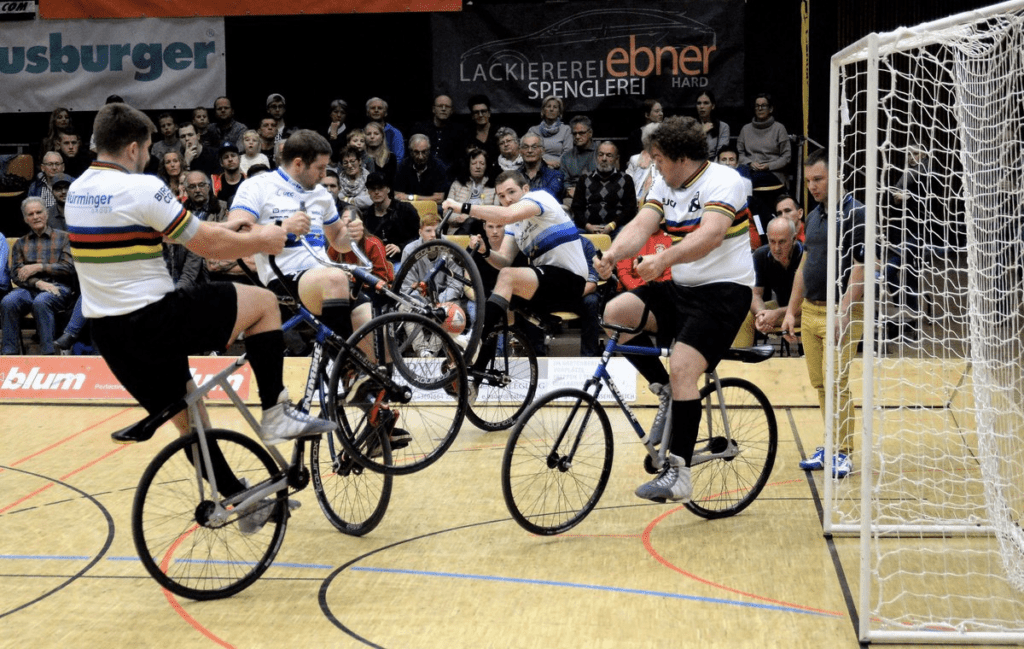I decided to move away from water sports this week and focus on part 1 of my ball trilogy. At this stage I am not surprised that Cycle ball exists. But the fact that it has been around for over 125 years did catch me by surprise. It was invented by a German-American gentleman; one Nicholas Edward Kaufmann in 1893.
In a nutshell it is football played on a bicycle. But the rub is that you cannot use your body parts to “kick” the ball- you have to do it using the cycle. And the bicycles are not your regular bikes! Cycle ball bikes are reconfigured such that the seat is located over the rear wheel, the handlebars points upwards (almost forming a u) and have a single gear with no brakes. That’s right- no braking allowed.
The ball used is filled with kapok, weighs around 600 grams is about 7 inches in diameter.
Cycle ball is most prominently played by two teams of two riders each in an indoor court. The court size if 36 by 46 feet with goal posts at each end and a designated penalty area. However, variants with 5 or 6 riders per team also exist and can be played out in the field.

Riders are not allowed to touch the floor or ball with any part of the body or lean on the ball or the goal post. They have to stay on the bicycle at ALL times. The only time they can touch the ball is from within a small area around the goal post. And both players cannot be in this area at the same time.
The penalty for violating the above rules is death by firing squad. Not really, just kidding. The player has to go back and make a round of their goal post. The games are fast-paced with two halves of seven minutes each and a two minute interval.
Given the sports’ German connection, cycle ball’s popularity in Germany is understandable where it is called radball. Rad is German for wheel. Cycle ball has also spread across Europe to Austria, Czech Republic, Russia and Switzerland to name a few. Outside of Europe, it is also quite well known in the land of the rising sun – Japan.
The first world championship was held in 1929. The Union Cycliste Internationale (UCI) is the main governing body which also holds the world championship. Germany, not shockingly, have dominated the tournament.
Cycle ball must require extreme balancing skills (remember – no brakes), bike control and speed given there are only two players in each team. Flicking the ball with the bike wheel is a skill which looks phenomenal. Although it is not a contact sport, bikers do run into each other and crashes are quite frequent.
Like most sports this one requires tons of practice. Balancing the bike is vital and doing that for 7 minutes without stepping off while trying to “kick” a ball.